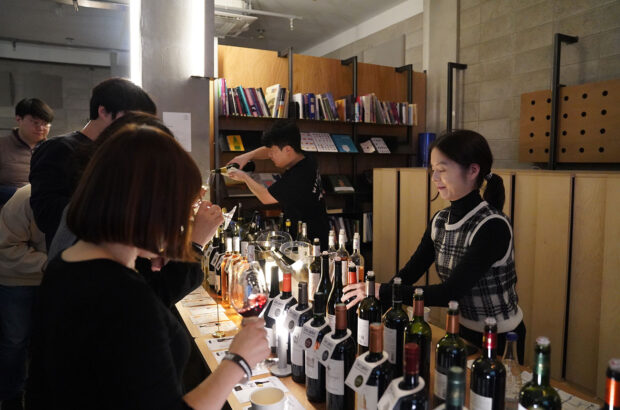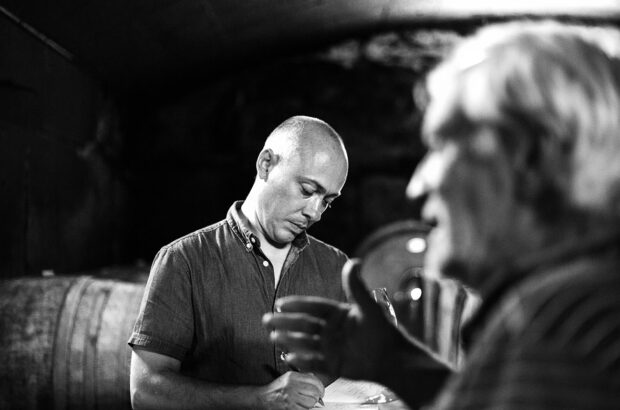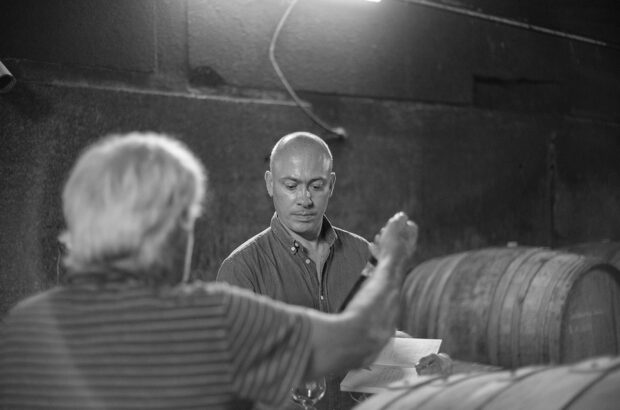‘While doing some work for a canned wine brand, I started to explore the world of alternative packaging formats. Wine boxes have obvious appeal to those who want to drink more sustainably, generating 90% less carbon emissions than the equivalent amount in bottles, but I had a long-held assumption that boxed wine means lower quality. If I had that misconception, working in the trade, most members of the general public certainly wouldn’t realise that boxed wine doesn’t need to be a poor experience.
‘During the Covid lockdown, I had the idea of premiumising that category, launching a boxed wine to challenge customer preconceptions about the format. Something you would feel proud taking to a dinner party – luxury everday wine priced at the equivalent of £12-15 a bottle. Laura Rosenberger, the former COO at Naked Wines, had the same idea about a boxed wine launch, and we joined forces [Rosenberger has since left the business].
‘The name Laylo comes from “lay low”, referring to lockdown – we were trying to capture a moment. We didn’t want to restrict ourselves by having “box” in the company name, which is a good thing, as we’ve now branched out into cans.
‘Our first ever boxed wine was a Tempranillo. The winemakers behind it needed to empty their tank for a new vintage, and we got it at an amazing price. We boxed 2,000 litres, and stored it in the cellar of my local wine shop. We set up a Shopify website, and put the word out, posting on all social media platforms. It was picked up by food and drink critic William Sitwell, who gave us invaluable publicity, and it sold out within two weeks.
‘We then had to decide, was it just a brilliant lockdown experience – we pretty much made back our costs, and had a lot of fun – or do we go all in? In January 2021 we decided to go for it. One of our customers offered to be an angel investor, and we exceeded what we set out to raise threefold.
‘We brought Master of Wine Clem Yates on board to help source the wine, and this helps communicate the message around quality. She helps us navigate the technical winemaking side, and the pricing. We quickly realised that it’s essential to offer a Sauvignon Blanc (ours is from the Loire), a Malbec (ours is Spanish) and a rosé (we chose Luberon in Provence). But we offer other varieties too – at the moment we’re selling a limited-edition English Bacchus from Essex.
‘We source all our wine from Europe – it gives us greater control; is more sustainable; and quicker to market. 2022 was quite challenging logistically; there was a cardboard shortage, and the war in Ukraine caused some problems.
‘In wine box technology, the game changer was the move from an inner lining lined with aluminium to EVOH, a recyclable polymer. It does the same job as aluminium, but is superior because although aluminium is sterile it would inevitably get hairline cracks, and the wine inside would oxidise. So winemakers were reluctant to put good wine into the box.
‘Last year we hired a salesperson and we’ve been surprised by demand from the on-trade – smaller independent restaurants and bars who want to offer good quality wines by the glass while minimising wastage. Most of our venues make a virtue of it, being transparent about where they have sourced the wine from, and pushing the sustainability aspect.
‘We got feedback from some existing customers (e.g. concert venues) that boxes and bottles were not ideal in busy environments. So we did a trial run of cans, and sold out three times over before launch.
‘Because many of those buying the canned wines actually drink them from the can we need to source more overt styles, with exuberant aromas – as there’s less surface area.
‘It’s the right time for our cans. Over the past year, canned wine sales are reported to have shot up from £2.5m in the UK to over £15m. They generate 70% less carbon than glass bottles and are 100% recyclable. The market has matured and customers have got used to the idea of seeing canned wine at the theatre or travel retailer. As with the boxes, we’re offering them a different, more premium experience.
‘When we were researching the market for bag in box, we were surprised by how behind the UK is in adopting the format. Today, it accounts for just 5% or 6% of the market. In France, by contrast, 44% of wine sold in supermarkets is boxed.
‘Why is the UK so behind? Until very recently, we haven’t been a significant wine-producing country, so consumers were less confident buying wine. The French understand winemaking better, and are used to buying in bulk direct from producers. Also the UK is quite traditional. People worry about other people’s perceptions. And generally the quality of bag in box has been pretty poor.
‘When we started, the thought that we might feature in The Times or on Sunday Brunch was unthinkable. Since then we’ve seen a dramatic shift, and people are more openminded. The wine critics get what we’re trying to do. It’s the everyday consumers who are perhaps more tentative. Our job is to educate, though I hate using that word.’







